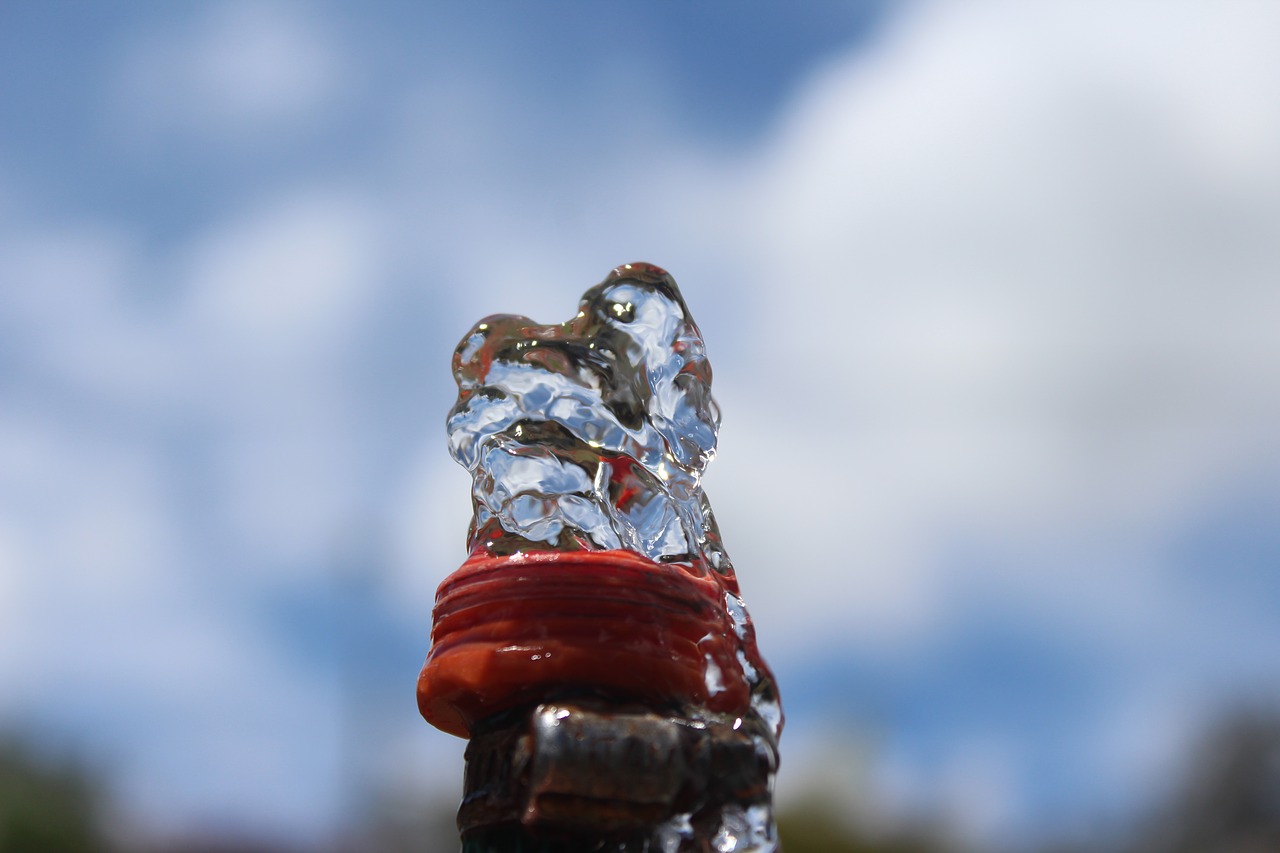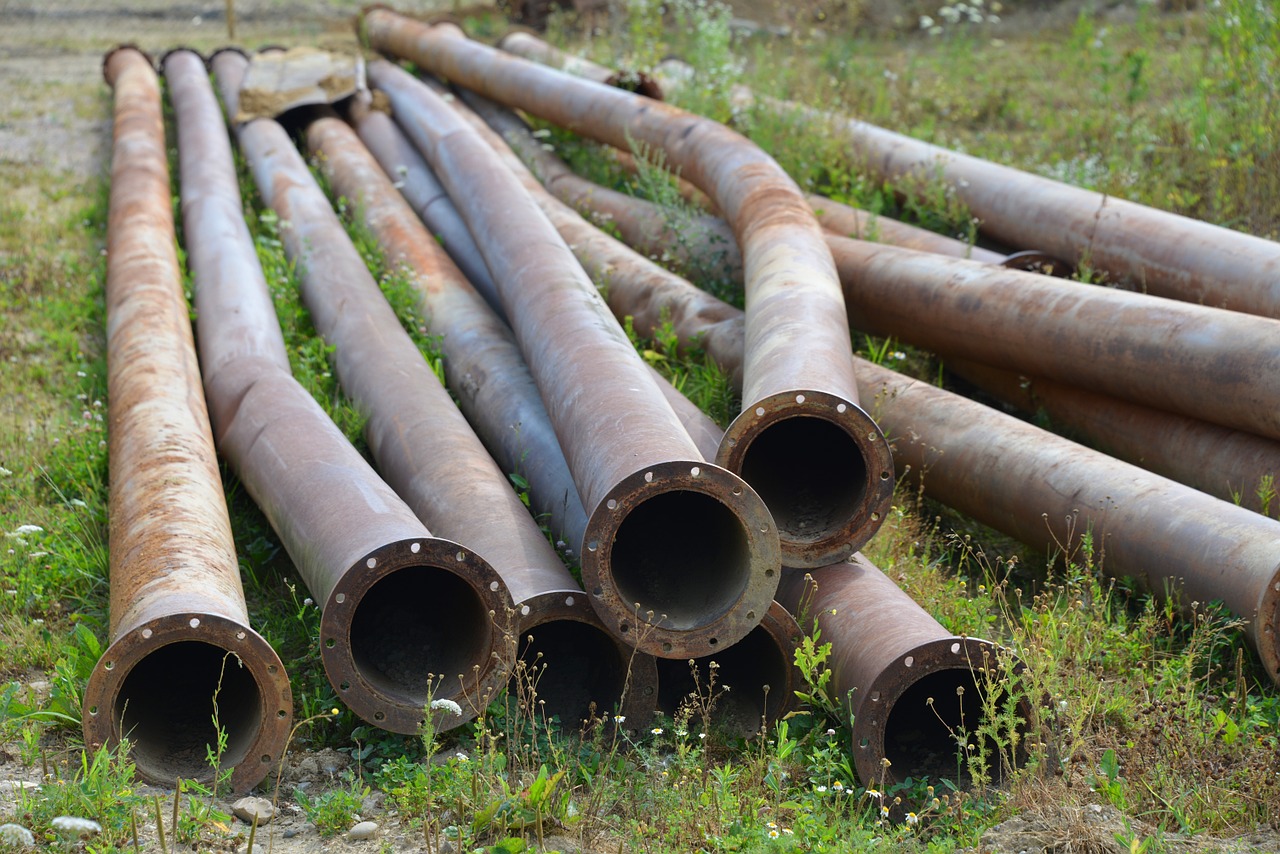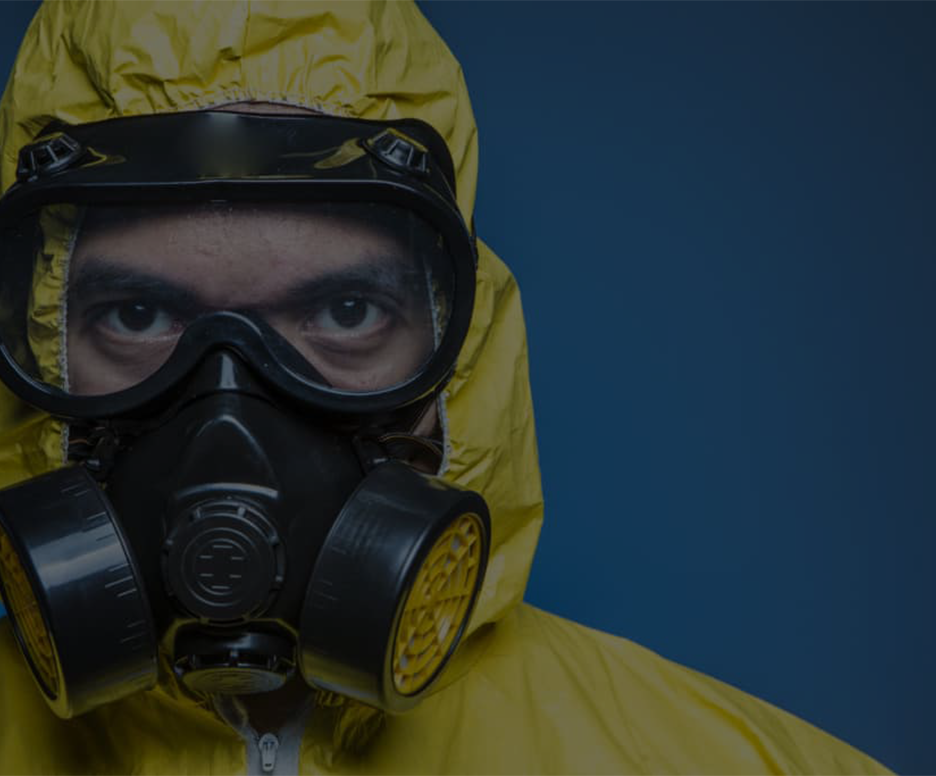
Top Causes Of Water Damage In Commercial Buildings
Today we’re talking about the top causes of water damage in commercial buildings.
And it’s true. Commercial water damage can be disastrous and it can cause no end of stress for business owners and managers who just want to get back on track as fast as possible.
Whether you suspect there’s water damage in your building or you want to be prepared before if it ever happens, read on.
Here are some of the top causes of water damage, how to spot them, and what to do next.
Let’s get right into it!
What is Commercial Water Damage Restoration?
Firstly, it’s essential to understand what commercial water damage restoration is all about.
From there you’ll know what you can expect when the time has come to combat water damage that has happened at your place of work.
Commercial water damage restoration is essentially a water damage service offered by water damage and restoration companies for commercial buildings, like: medical centers, hotels, retail stores, warehouses, farm land to name a few examples.
After water has leaked into floors, walls, ceilings, and furnishings, a commercial water damage restoration expert comes in and puts plans in place to rectify the problem.
They use commercial heaters and dryers to dry out wet areas and minimize damage.
By putting these control measures in place, they can then reduce the risk of having to carry out large-scale repairs that can be both stressful and costly.
Commercial water damage restoration also involves content recovery. They can assist with the removal of anything salvageable that can be repaired or restored off-site.
Some experts may even be able to help with document recovery, including data from electronic devices.
Talk to your local commercial water damage restoration experts and see what services they offer to help you get back on track if you ever need to or contact 911 Water Damage Experts if you’re nearby.
What Buildings Are Affected by Water Damage?
You may think that only commercial businesses in flood zones, near bodies of water, and in high storm risk areas will be affected by water damage, but that’s not actually the case.
Suppose your business has damaged pipes, broken appliances, roof damage, a leaking sprinkler system, or even a damaged HVAC system.
In that case, it too, could be at risk of being affected by water damage.
It’s important not to have an “it’ll never happen to me” mentality and always be on the lookout for signs that your business is affected by water damage.
Offices, warehouses, retail stores, and even small cafes are all at risk without appropriate care and processes in place.
What Are The Common Causes of Commercial Water Damage?
You may be surprised to learn that there are more commercial water damage causes than just heavy rainfall.
Sure, rain can cause all kinds of problems, but so too can the very things included in your business to help it run smoothly.
Damaged and Broken Pipes
Pipes are something that all commercial premises have.
If you have toilets, kitchens, and running water, then you’ve got pipes. Even if you don’t have these things, then pipes may still exist within your commercial building structure from previous owners or tenants.
So, if they are there, they can be damaged or broken. Several things can cause pipes to become damaged or broken.
For example, freezing temperatures can cause pipes to expand then contract, leading to cracks and eventually leaking of a potentially catastrophic nature. A change in pressure and old piping networks can also be to blame for leaks.
You can typically spot a pipe-related leak by water stains on ceilings, floors, and walls. You may also notice loose or cracked tiles and a slight musty smell. The sooner you can seek help for leaking pipes, the higher the chance you can fix the problem before it gets too significant.
Damaged Roofing Materials
If you’ve noticed signs of leaking in your ceiling, a damaged roof, or mould damage, then your commercial water damage may be caused by damaged roofing materials.
Heavy wind, rain, and snow can all be to blame, but so can a myriad of other things. Failure to maintain your roof, missing shingles, and even damage from neighbouring trees can all be reasons why your roof is leaking and causing damage.
This is when you should call in water damage restoration experts near you to take control of the issue.
Window Damage
You might think that your roofing is the only way for water to leak into your commercial building, but it’s not. If your windows are damaged or do not have proper seals, they can cause leakage.
Water can seep in through the sills and lead to damaged wood, warping, and mould. Over time, caulk materials can wear out. Regular maintenance and checks of your building can tell you when it’s time to reapply caulk and prevent window damage and water leakage.
Natural Disasters
One of the most common causes of commercial water damage is natural disasters. From flash flooding to thunderstorms and hurricanes, a lot can happen in a short space of time.
Before such events happen, make sure your building has a high-quality drainage system and clean gutters. A disaster plan with contact information for commercial water damage experts can also prove useful.
Leaking Sprinklers
Your sprinkler system can prevent one disaster, but it can also be the cause of another.
If you notice wet walls, a strong smell of mould or must, and wet carpet, then leaking sprinklers might be to blame.
A way to avoid such an issue is by making sure your sprinkler systems are checked often for faults. After all, you want them to work as intended if required for a fire in your commercial property.
Broken HVAC System
Heating and cooling units tick away in the background and provide you with a comfortable working environment. In saying that, they can also cause significant water damage if they are poorly maintained or break.
The ducts in HVAC systems can wear out and cause water leakage. As soon as you notice signs of water damage, call a water damage restoration expert. In saying that, you can prevent water damage in the first place by having an HVAC expert come in and maintain your systems regularly.
Blocked Or Overflowing Gutters And Drains
When gutters are clogged with leaves, ice, or debris, water cannot drain properly. This causes overflow that can pool near the building’s foundation or back up under roof shingles. Similarly, floor drains in basements and washrooms can become clogged, leading to water accumulation indoors.
Watch for water pooling near the base of the building, visible water streaks on exterior walls, or slow-draining floor drains. Regular cleaning of gutters, roof drains, and stormwater systems is critical for commercial properties.
Leaky Plumbing
Leaking plumbing fixtures such as sinks, toilets, or dishwashers may not seem urgent at first glance, but slow leaks can cause more damage over time than sudden bursts. Worn-out seals, faulty valves, or constant use in high-traffic washrooms or break rooms contribute to these leaks.
You might notice water-damaged cabinetry, soft drywall, discoloured tiles, or mould growth around fixtures. A dripping faucet left unfixed for weeks can waste thousands of litres of water and silently rot the structure behind the walls.
Foundation Cracks
Foundation cracks and poor waterproofing are also significant contributors to water damage, particularly in older or poorly constructed commercial buildings. Over time, soil movement, hydrostatic pressure, and freeze-thaw cycles can crack foundation walls or slabs. If your building wasn’t properly sealed, water will find its way inside.
Telltale signs include water seepage at floor level, musty smells in lower levels, visible cracks in concrete, or efflorescence—a white powdery residue left by evaporated water. Investing in foundation sealing, sump pump systems, and exterior drainage can go a long way in preventing basement-level flooding.
Malfunctioning Appliances And Equipment
Malfunctioning appliances or equipment such as water heaters, dishwashers, ice machines, or washing machines are another overlooked source of water damage. These devices often run quietly in the background and may leak slowly over time.
Water pooling near the base of the appliance, corrosion, or mouldy odours in utility rooms are all signs of a slow leak. Business owners should inspect their appliances monthly and replace any cracked hoses or corroded fittings before they fail.
10 Practical Tips To Prevent Water Damage In Commercial Buildings
Schedule Regular Building Inspections
The first line of defence is early detection. Make it a routine to inspect your building every quarter, with detailed walkthroughs of key areas such as the roof, plumbing, HVAC systems, basements, and any spaces housing water-using appliances. During inspections, look for water stains, rust, peeling paint, warped flooring, or mould—all potential signs of leaks. Also monitor your water bills; unexpected spikes often indicate a hidden leak.
Maintain The Roof Seasonally
Your roof takes the brunt of Canadian weather—from heavy snow to pounding rain and freezing winds. A poorly maintained roof is one of the most common sources of commercial water damage. Inspect your roof twice a year, ideally in spring and fall, and immediately after major storms. Look for missing shingles, cracked flashing, soft spots, or ponding water on flat roofs. Clean out roof drains and scuppers to prevent blockages and water buildup.
Install Water Leak Detectors
Water leak sensors are a small investment that can prevent large losses. These devices are especially valuable in high-risk zones like mechanical rooms, under sinks, near water heaters, and in storage areas with sensitive materials. Many smart leak detectors can send alerts to your phone or building management system, giving you time to act before a small leak becomes a flood.
Clean And Maintain Gutters and Downspouts
Clogged gutters and downspouts can cause water to back up onto the roof or overflow along the building’s walls and foundation. This is particularly risky during the spring thaw or fall leaf season. Ensure gutters are cleaned at least twice a year and that downspouts extend well away from the building—ideally 5 to 10 feet. Installing gutter guards can help reduce maintenance.
Insulate Pipes To Prevent Freezing
Frozen pipes are a serious winter hazard in many parts of Canada. When water freezes and expands in the pipe, it can burst and cause significant flooding. To prevent this, ensure that all exposed pipes—especially those near exterior walls or in unheated spaces—are well insulated. Also, maintain a minimum temperature in vacant units or less-used areas during cold months.
Keep HVAC Systems In Top Condition
HVAC systems regulate air temperature and humidity, but they can also become sources of leaks if poorly maintained. Clogged condensate lines, frozen coils, and worn seals are all culprits. Regular servicing of your HVAC units, including filter replacement and drain line cleaning, helps prevent excess moisture from accumulating and damaging ceilings or floors.
Upgrade Old Or Faulty Plumbing Fixtures
Outdated plumbing systems are prone to corrosion, pressure issues, and slow leaks that can go undetected until serious damage is done. Pay attention to fixtures that constantly drip, toilets that don’t shut off, or valves that feel loose. Proactively replacing old pipes and worn fittings—especially in high-use areas like washrooms and kitchens—can prevent sudden failures.
Repair Foundation Cracks And Waterproof Basement Walls
Cracks in your building’s foundation or basement walls can allow groundwater to seep in during rain or thaw cycles. Even hairline cracks can lead to serious problems if left untreated. Waterproofing the basement with sealants, adding a sump pump with a battery backup, and ensuring proper grading around the property can go a long way in keeping water out.
Test And Maintain Your Sprinkler System
While fire sprinklers are critical for safety, they can also be a source of water damage if not maintained properly. Corrosion, frozen lines, and mechanical failures can lead to unexpected discharges or leaks. Have a certified technician inspect your fire suppression system at least once a year, and ensure the system is protected from freezing in colder months.
Develop An Emergency Water Response Plan
Even with the best prevention, accidents can happen. Every commercial property should have a response plan for water emergencies. Train staff or tenants on how to shut off the main water supply, locate emergency exits, and contact professional restoration services. Keep emergency contact numbers posted and ensure your insurance policy is up to date and includes water damage coverage.
FAQs
How can I detect hidden water damage in my building?
Hidden water damage often shows up as musty smells, soft or discoloured drywall, bubbling paint, mould growth, or unexplained humidity. Monitoring utility bills for sudden spikes can also be a sign.
How often should a commercial property be inspected for water risks?
It’s best to inspect high-risk areas—like the roof, HVAC system, plumbing, and basement—at least every 3 to 6 months, and always after a major storm or cold snap.
Are flat roofs more prone to leaks than sloped roofs?
Yes. Flat roofs don’t drain water as effectively as sloped ones, making them more vulnerable to pooling, ice damming, and eventual leakage if not maintained properly.
Can a clogged gutter really cause indoor water damage?
Absolutely. When gutters overflow, water can seep into the roofline, down the walls, or collect around the foundation, eventually finding its way inside the building.
What are the signs that my HVAC system is causing water damage?
Water damage from HVAC units may include pooling water near vents, rusted ductwork, mildew odours, or stains on walls and ceilings near the system.
What’s the risk of ignoring a small leak under a sink or around a toilet?
Even small leaks can lead to significant structural damage, mould growth, rot, and costly repairs if left unchecked over time.
Why does my building smell musty even though I don’t see any water damage?
A musty smell is often a sign of hidden moisture or mould growth—possibly behind walls, under carpets, or in the HVAC system. Moisture meters or infrared cameras can help locate the source.
Can water damage affect a building’s electrical systems?
Yes. Water intrusion near electrical panels, outlets, or wiring can be extremely dangerous and pose fire and electrocution risks. Immediate professional assessment is crucial.
Is mould always a result of water damage?
In most cases, yes. Mould thrives in damp environments, especially when water damage goes untreated for more than 24–48 hours.
How long does it take for mould to grow after water exposure?
Mould can begin to grow within 24 to 48 hours in moist environments. That’s why quick drying and remediation is critical after a leak or flood.
If you have any questions or comments about our top causes of water damage in commercial buildings or need water damage services call us at 1-833-WE-DRY-IT or chat with us in real-time on our Facebook fan page.
Related Posts
Water Damage Restoration Articles
What you can expect from a fire damage restoration company
Water damage prevention tips from the most common problems we’ve seen
Top causes of water damage in commercial buildings and how to find them
Must-know water damage tips: What to do after your house floods
What does good water damage restoration look like?
DIY water damage restoration and the hidden dangers
How to choose the right water damage company
Flast floods: What to do before, during and after a flash flood
What to do when your attic leaks?
Mould Removal Restoration Articles
5 Signs You Have Mould Growing In Your Walls
“Can I Remove Mould Myself?” Our Mould Removal Experts Have Answers
7 Must-Know Reasons Why You Should Get A Mould Inspection Before Buying A House
Does Mould Attract Bugs? Yes And Here’s What Kind And Why
How To Remove Mould From The Attic [Mould Prevention Tips Inside]
How Rain Causes Mould Growth-Prevention Tips Included
Must-Know Tips: How To Remove Mould In Your Basement
Fire Damage Restoration Articles
How to clean up after a house fire
Fire damage restoration checklist
Fire damage tips: 6 hazards property owners miss
How smoke from fires can negatively affect your health
What are the most common causes of house fires?
10 helpful smoke damage cleaning tips
Related Water Damage Services
Fire damage restoration services
Water damage restoration services
Emergency cleanup services
Mould removal services
Weather damage services




